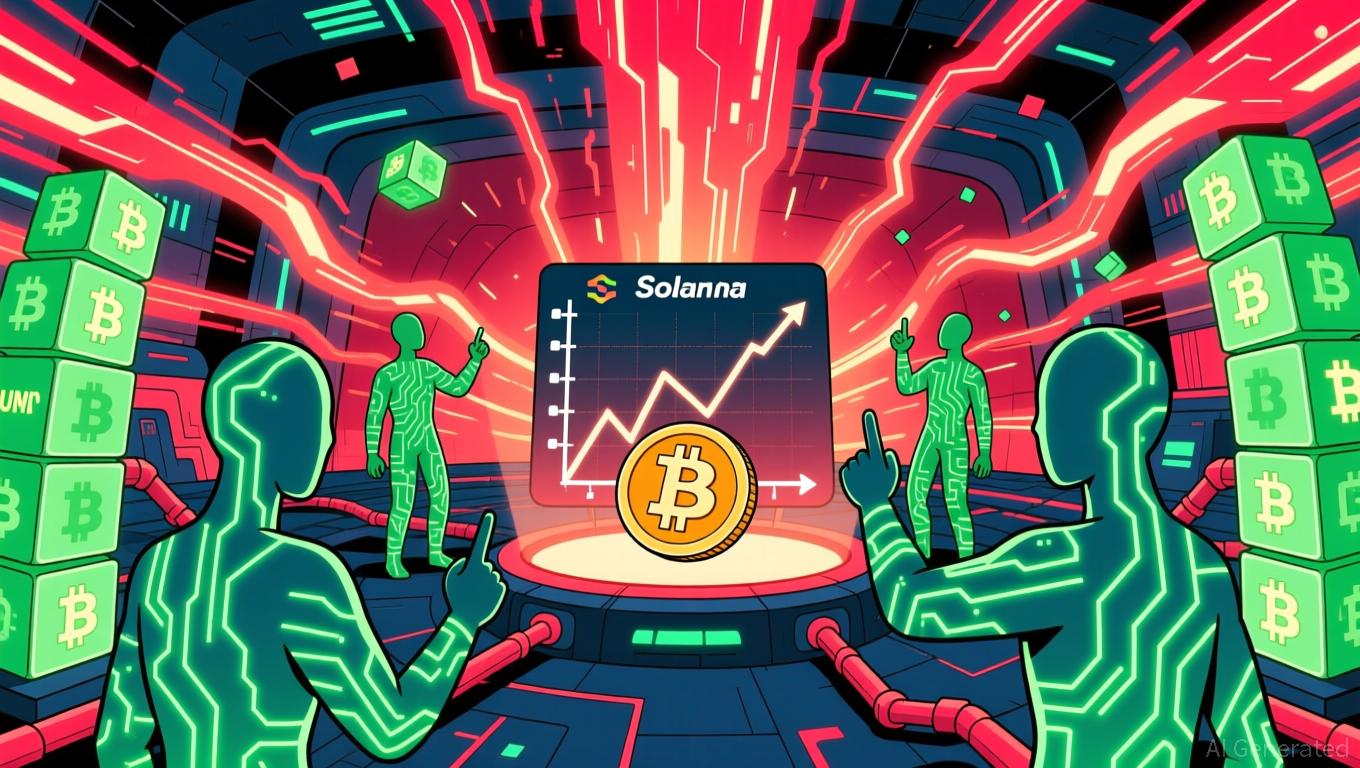Morpho Delists Elixir’s sdeUSD/USDC Pair After deUSD Collapse, 3.6% Bad Debt
Quick Take Summary is AI generated, newsroom reviewed. Morpho delisted Elixir’s sdeUSD/USDC market after deUSD’s collapse. The action created 3.6% bad debt in the Morpho USDC vault. Elixir retired its deUSD stablecoin after losing 98% of its value. MEV Capital is coordinating recovery efforts for creditors. About 80% of deUSD holders have received USDC compensation.References X Post Reference
Ethereum-based lending protocol Morpho has gotten the Elixir sdeUSD/USDC exchange off its USDC vault following the drop in value of its stablecoin, deUSD. The delisting led to a loss of 3.6% bad debt, which is a significant loss in the Morpho system of vaults. This move was soon after Elixir announced that its stablecoin deUSD was permanently retired and declared worthless.
How the Delisting Unfolded
Morpho, which has the best lending and borrowing markets in Ethereum, operates a variety of vaults that have funds allocated to particular lending pools. The delisting was according to the Morpho standard procedure:
- The protocol established a limit of zero in the supply of the market.
- The assets in the affected pool shifted out.
- When the allocations cleared, the market came out of the withdrawal queue of the vault.
All these efforts did not permit retrieving 3.6% of the Total Value Locked (TVL) because of the value crash of sdeUSD.
Interior, Stablecoin Failure, Elixir
This crash made deUSD and its derivatives, such as sdeUSD, virtually useless. Elixir responded by creating a USDC compensation program to compensate victims. The plan will consist of borrowers, liquidity providers on Automated Market Makers (AMMs), and Pendle LPs.
MEV Capital Steps in
MEV Capital, a large player in crediting and liquidity, affirmed that they were continuing to work with Morpho, Elixir, and other impacted platforms such as Euler and Compound. The team intends to organize the strategies for repaying affected borrowers and lenders.
This partnership reflects the crisis management procedures of previous DeFi breaks when creditor collectives consolidated their assets to claim back part of their money via coordinated discussions.
Monetary Consequences and Estimates
The bad debt ratio of 3.6% indicates there is a loss that is quantifiable but with less contagion. With a TVL of say 10 million, Morpho will be short by approximately 360,000 dollars. In the case of bigger vaults, including $50 million, the losses may be up to $1.8 million. In the meantime, the compensation by Elixir may be in the form of payouts of between 10-20 million USD, depending on the circulation of the deUSD before its failure.
The incident reveals the current dangers of algorithmic and synthetic stablecoins. Similar to the TerraUSD (UST) crash in 2022, the failure of deUSD underscores the riskiness of assets that operate based on interdependent lending and derivative networks.
Prospect of Morpho and Elixir
The fact that Morpho has moved to de-list the sdeUSD/USDC market very fast demonstrates that DeFi is becoming more mature in its risk management practices. Lending procedures in the present day are based on programmed surveillance of solvency requirements, including Health Factors, which guarantee prompt response to undercollateralized accounts. To the user, the incident indicates the possibility and susceptibility in the liquid staking and lending markets.
The rapid reaction can revive the faith in the community, even though it can incur short-term losses. In the case of Elixir, the solution to recovery is to repay the USDC and regain user confidence. These steps should, hopefully, allow stabilizing the levels of trust in the stablecoin industry of DeFi, but it is not surprising that new regulatory interest will become unavoidable.
Disclaimer: The content of this article solely reflects the author's opinion and does not represent the platform in any capacity. This article is not intended to serve as a reference for making investment decisions.
You may also like
Uniswap News Today: Uniswap's CCA Makes Token Launches More Accessible, Reducing Whale Influence
- Uniswap v4 launches Continuous Clearing Auctions (CCA), a permissionless protocol for transparent, community-driven token launches with Aztec. - CCA divides token sales into blocks settled at market-clearing prices, reducing volatility and sniping while enabling equitable distribution. - The protocol automatically seeds liquidity post-auction and supports privacy via Aztec's ZK Passport, marking a DeFi innovation in fair token distribution. - CCA aims to standardize on-chain price discovery, countering w

Why MUTM’s Approach to DeFi Might Establish New Standards for Liquidity
- Mutuum Finance (MUTM) nears 99% Phase 6 presale allocation ahead of Q4 2025 V1 lending protocol launch on Sepolia testnet. - Project has raised $18.6M through strong retail and institutional participation, positioning it as a rising DeFi contender focused on liquidity and execution speed. - V1 will introduce ETH/USDT lending, mtTokens, and a Liquidator Bot, marking transition from theory to practical DeFi implementation. - Market attention centers on MUTM's $0.05+ token price, transparent roadmap, and Ph

Solana News Update: Solana's DeFi Expansion Poses a Threat to Ethereum's Leading Position as Buybacks Drive Further Development
- Solana's Pump.fun accelerates growth via $173.7M PUMP token buybacks, reducing supply by 10.928%. - Solana's DEX volumes ($5.11B daily) now surpass Ethereum and BNB Chain, driven by 21.5 development activity score. - Ethereum's 67.65% DeFi TVL lead faces pressure from Solana (8.9%) and Tron (25.78% stablecoin share). - Institutional inflows and macroeconomic factors determine Solana's $180 price breakout potential (29% probability). - Pump.fun's sustainability hinges on maintaining user base amid Solana'

Tether’s Approach to Gold: Integrating Blockchain Technology with Precious Metals to Transform Trust
- Tether , issuer of the world's largest stablecoin, has accumulated $8.7B in Swiss gold reserves by 2025, becoming a top private gold holder. - The company restructured reserves to prioritize gold, aligning with central bank trends and tokenizing $1.5B in bullion via XAU₮. - Tether hired HSBC executives and launched a $200M gold treasury venture, vertically integrating into mining and royalty firms. - Its strategy reflects macroeconomic shifts toward gold as an inflation hedge, but faces scrutiny over tra

